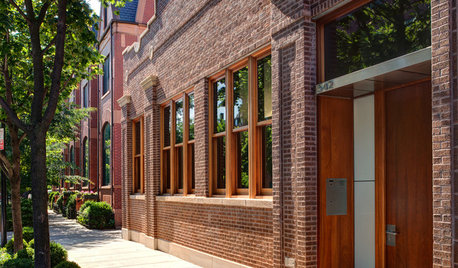Loop Vs. Branches
tmy23
12 years ago
Related Stories

FALL AND THANKSGIVINGDIY: Create a Dream Tree for Fall
Hang your wishes and thanks on a heartfelt arrangement of branches and leaves
Full Story
HOLIDAYSFall DIY Project: Pumpkin-Shaped Eucalyptus Arrangement
Freshen up your front entry with this easy-to-make decorative piece
Full Story
CHRISTMAS20 DIY Ornaments to Give or Keep
From classic to quirky, easy to more involved, these Christmas ornaments will perk up your tree or make a great gift
Full Story
HOUZZ TOURSHouzz Tour: A Three-Story Barn Becomes a Modern-Home Beauty
With more than 9,000 square feet, an expansive courtyard and a few previous uses, this modern Chicago home isn't short on space — or history
Full Story
MOST POPULARA Contractor's Secrets to Hanging Holiday Decor
Hang a wreath or garland on brick, concrete, Sheetrock or wood the professional way — and avoid the potential pitfalls
Full Story
HOLIDAYSChristmas Cleanup Tips for the Not Naturally Organized
Dreading the postholiday chores? First let yourself unwind. Then grab some boxes, a few supplies and this easy guide
Full Story
DIY PROJECTSHoliday DIY: Woodland Door Swag Welcomes Guests
Create a nature-inspired decoration that you can enjoy throughout the holiday season this year and in the future
Full Story
MOST POPULARHoliday DIY: 25 Ideas for Make-Your-Own Decor and Gifts
We show you how to create cute and clever Christmas and Hanukkah gifts, ornaments, wreaths and more
Full Story
FARM YOUR YARDHow to Grow Vegetables in Containers
Get glorious vegetables and fruits on your patio with a pro’s guidance — including his personal recipe for potting mix
Full StorySponsored
Columbus Area's Luxury Design Build Firm | 17x Best of Houzz Winner!
More Discussions









mike1059
lehua49
Related Professionals
Wrentham Landscape Architects & Landscape Designers · Saint Matthews Landscape Architects & Landscape Designers · Ellensburg Landscape Contractors · Leicester Landscape Contractors · Mercedes Landscape Contractors · Oklahoma City Landscape Contractors · Rochester Landscape Contractors · West Chicago Landscape Contractors · Oxon Hill Landscape Contractors · Goldenrod Landscape Contractors · Shafter Landscape Contractors · Gardena Solar Energy Systems · Holliston Solar Energy Systems · Palo Alto Solar Energy Systems · Randolph Solar Energy Systemstrkpoker